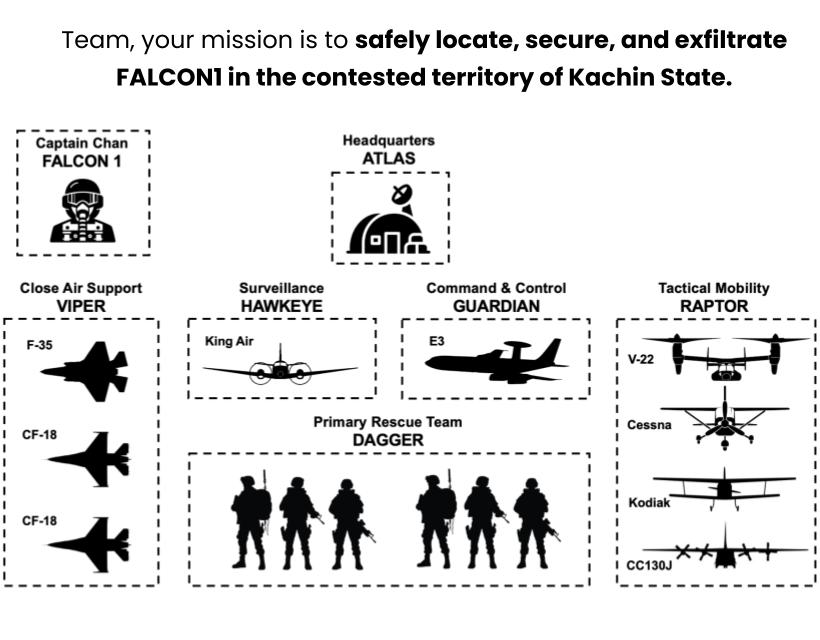

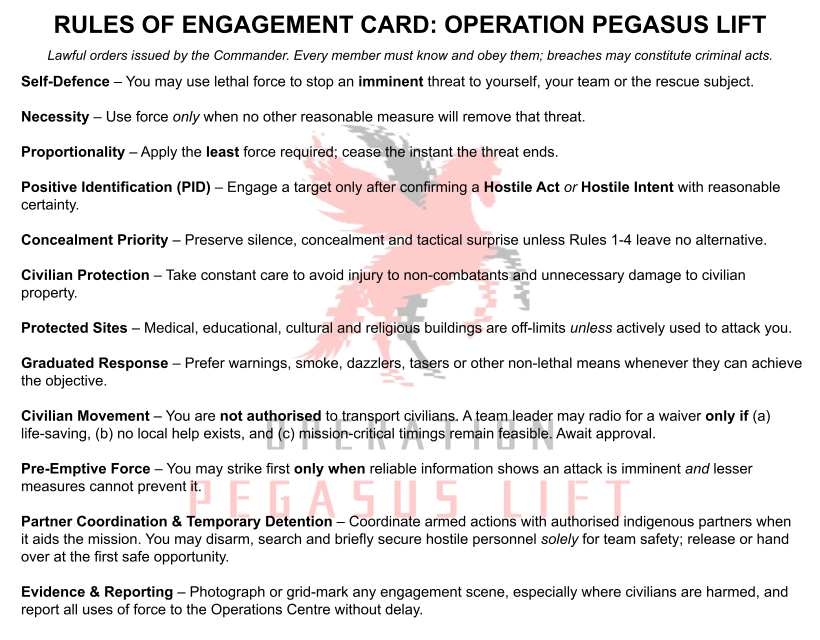
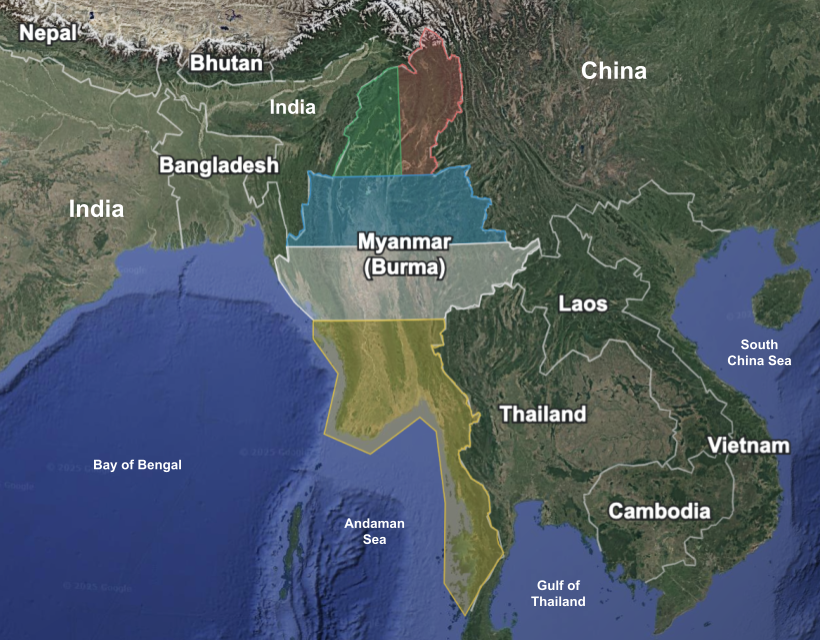
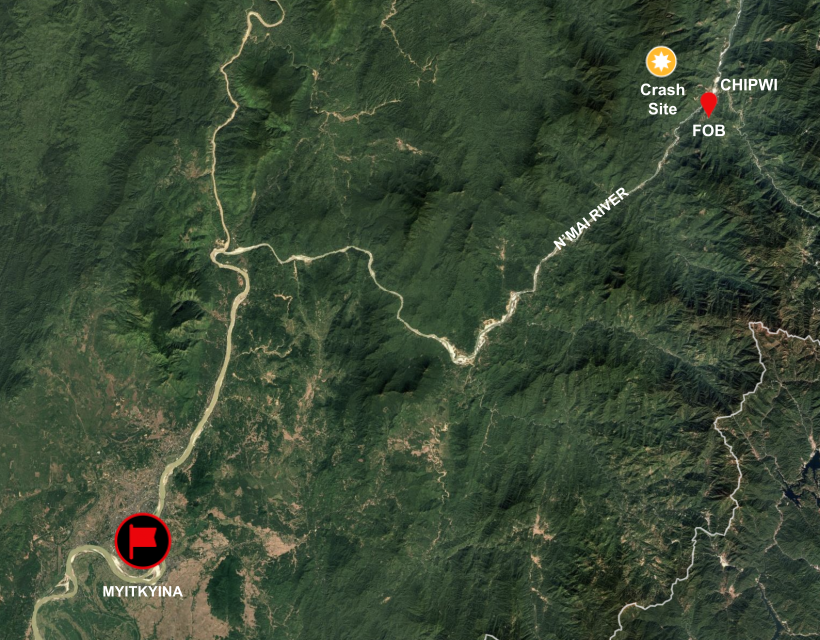
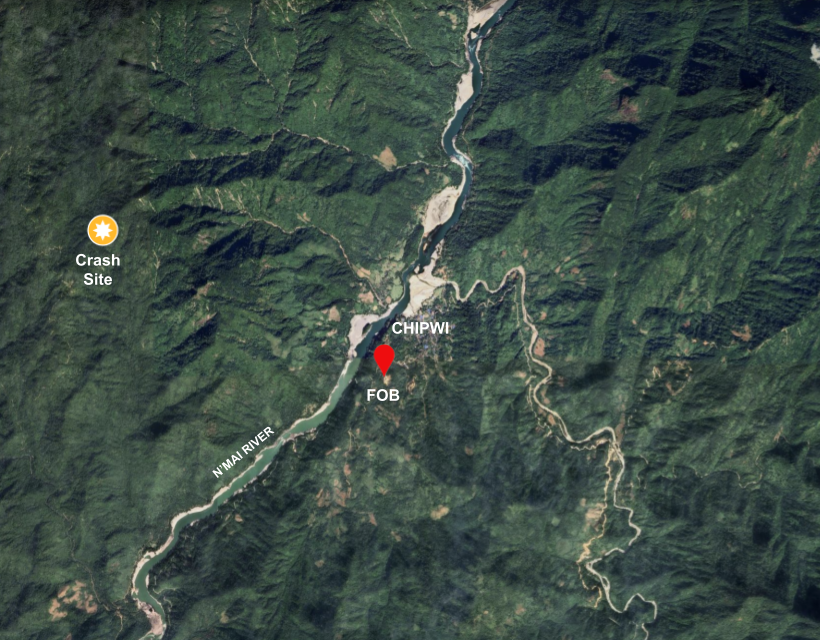
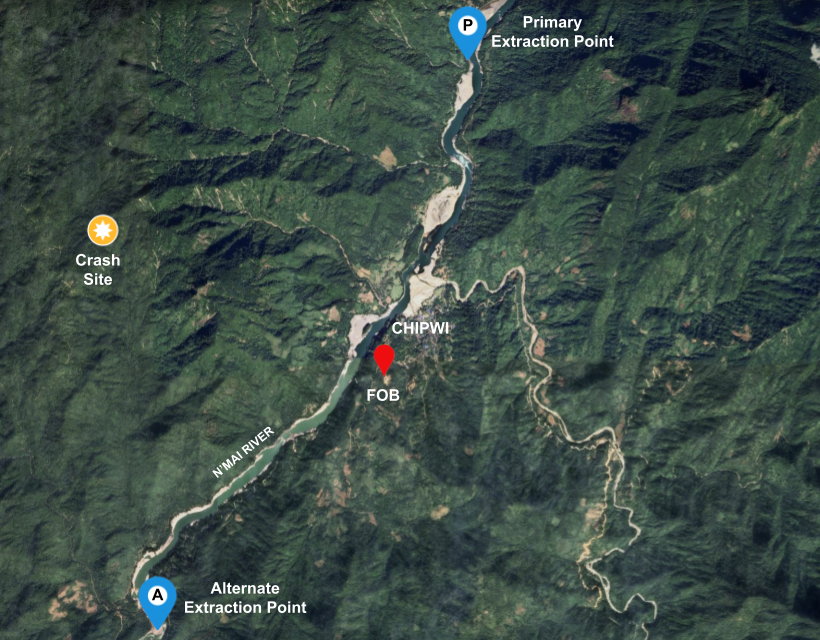
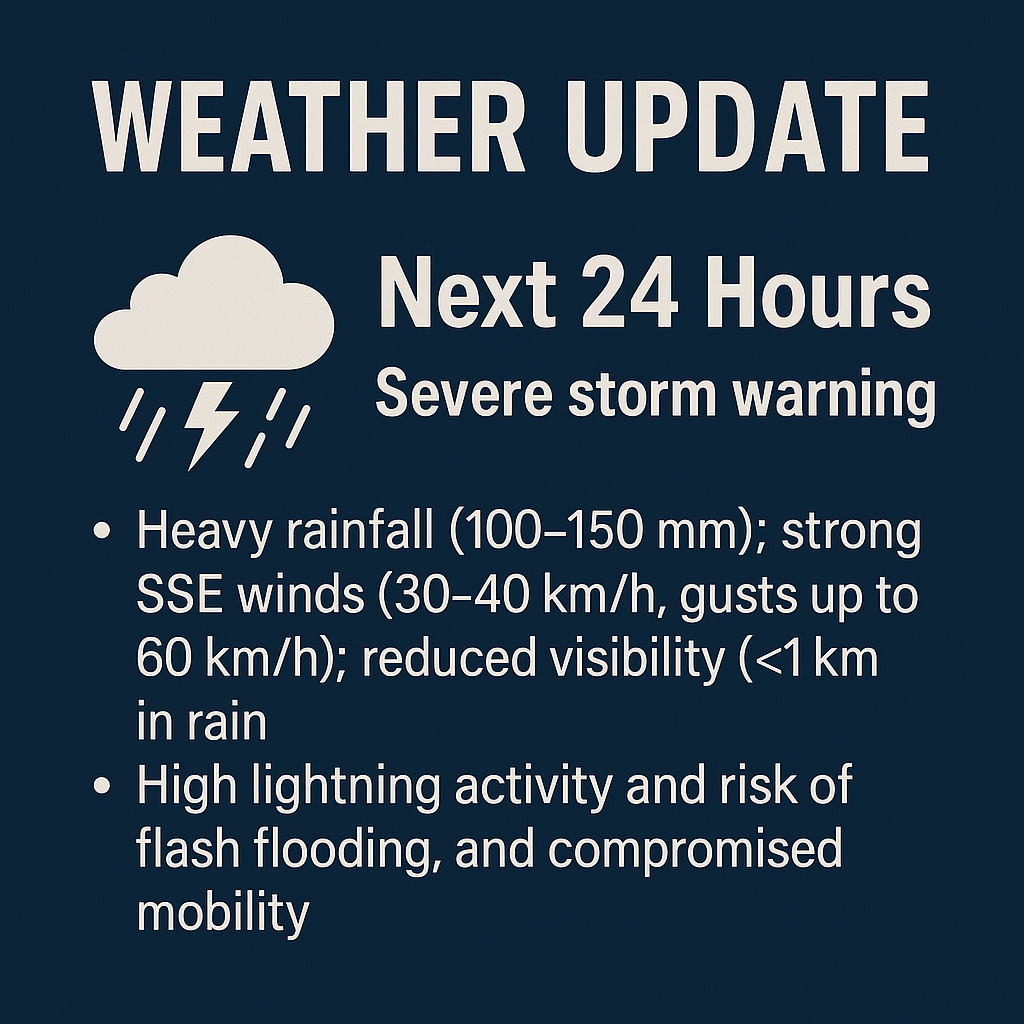
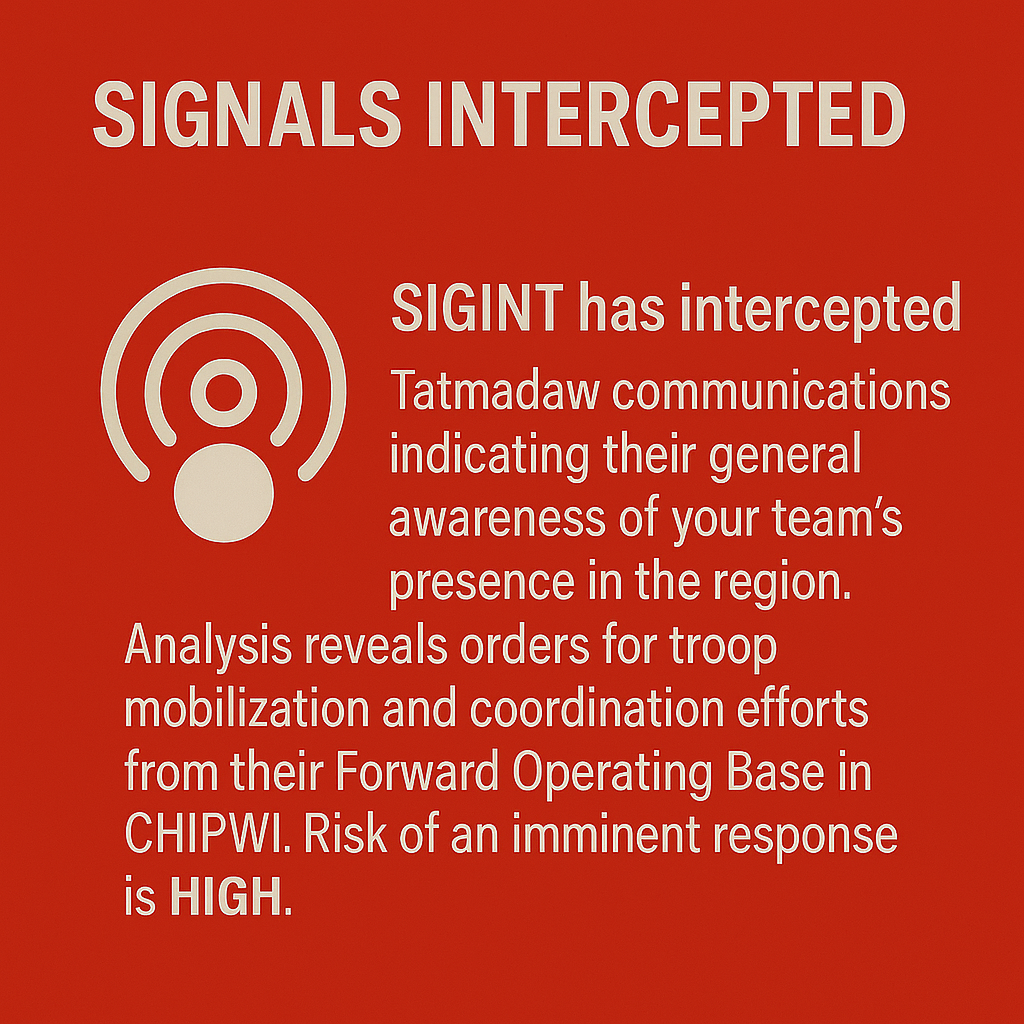
Weather & SIGINT updates elevate operational risk. Severe storms are expected within 24 hours. Intercepted communications suggest imminent troop movement from Tatmadaw forces.
Context
You’ve made it to the crash site. Nestled in a dense jungle clearing, it’s a chaotic scene of scattered debris and smoldering remains of the downed aircraft. The area radiates in silence, broken only by the occasional crackle of burning material, hinting at the violence of the crash.
At the edge of the clearing you see Captain Chan’s parachute tangled in the tree, and below, she’s sitting on the ground crunched up with blood stains on her leg. The team immediately deploys to secure the area while your Special Operations Medic assesses her condition.
Captain Chan has multiple shrapnel wounds that have caused severe bleeding in her right leg as well as a compound fracture in her right arm. She’s conscious, and at risk of going into shock. Her mobility is degraded, and without proper treatment, it’s clear her injuries could become life-threatening. Your medic is prepared to administer care, but the choice of action must balance medical needs with mission imperatives.
You send a radio message to Callsign GUARDIAN flying above that you’ve arrived at the crash site, located Captain Chan, and are assessing her condition. You request a nearby Extraction Point, anticipating that Captain Chan’s condition will slow you down.
Task
Select the best option to treat Captain Chan’s injuries while balancing medical care, security, time, and flexibility to proceed to the Extraction Point.
Options
Explore the options below with your team.
- Option 1
- Option 2
- Option 3
- Option 4
- Option 5
Shrapnel Wound Management and Arm Splinting
This option involves promptly addressing Captain Chan's shrapnel injuries to halt significant bleeding and securing her broken arm with a splint. The immediate objective is to stabilize her for safe movement, ensuring she is ready for evacuation with her condition managed as effectively as possible.
Additional time on site: 20 minutes
Advantages- Stabilizes Captain Chan for safe movement
- Reduces the risk of worsening injuries during evacuation
- Delays departure from the crash site
- Still limited in comparison to advanced medical care
Rapid Stabilization with Oral Pain Management
This strategy adopts a swift approach to stabilizing Captain Chan using basic bandages and oral analgesics to alleviate pain, expediting her readiness for evacuation. It takes a minimalistic approach to on-site treatment, acknowledging the trade-off between speed and the depth of medical care.
Additional time on site: 10 minutes
Advantages- Quickest on-site treatment approach
- Enables rapid movement from the crash site
- Minimal care may not adequately address injuries
- Increased discomfort for Captain Chan during transit
Advanced Medical Care
* Available only if selected advanced medical supplies in CJ1
Employing the team's advanced medical supplies provided by the Quartermaster, this option administers comprehensive treatment for Captain Chan's injuries at the crash site. It accepts a delay in evacuation from the crash site to achieve superior medical treatment, ensuring Captain Chan is better prepared for the next phase.
Additional time on site: 45 minutes
Advantages- Provides high-quality medical care at point of injury
- Improves Captain Chan’s stability for further movement
- Significant delay at an exposed location
- Requires specialized equipment and trained personnel
Automated Drone Delivery of Medical Supplies
This approach calls for an unmanned aerial vehicle (UAV) to deliver advanced medical supplies directly to the crash site. While offering the potential for superior medical treatment, it introduces a delay in treatment and evacuation from the crash site, and is contingent on favorable weather conditions.
Additional time on site: 90 minutes
Advantages- Grants access to advanced supplies without requiring prior selection
- Allows preparation while waiting for delivery
- Longest delay on-site
- Weather-dependent and may fail to arrive
Immediate Extraction with In-Transit Care
This approach rapidly moves Captain Chan from the exposed crash site while ensuring she receives ongoing, substantial medical care during move to the Extraction Point. Structured to combine quick evacuation with sustained medical support, this option strives to balance efficient movement with continuous care.
Additional time on site: 0 minutes
Advantages- Enables immediate departure from crash site
- Maintains care during transit
- Challenging to provide treatment while in motion
- Reduced team agility during movement
Decision
After carefully assessing all of the options above, as a team choose the best approach to care for Captain Chan.Your team must wait until there are 2 mins or less remaining before selecting its decision.
Option 1: Shrapnel Wound Management and Arm Splinting
Stabilize Captain Chan’s wounds and fracture on-site for a safer evacuation.
Select Option 1
Option 2: Rapid Stabilization with Oral Pain Management
Apply basic treatment and pain relief to allow quick evacuation.
Select Option 2
Option 3: Advanced Medical Care
* Requires advanced medical supplies in CJ1
Provide comprehensive treatment on-site using advanced medical supplies.
Select Option 3
Option 4: Automated Drone Delivery of Medical Supplies
Request UAV delivery of supplies; effective but weather-dependent.
Select Option 4
Option 5: Immediate Extraction with In-Transit Care
Evacuate immediately and provide care en route to the Extraction Point.
Select Option 5

